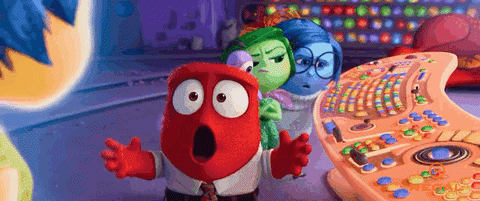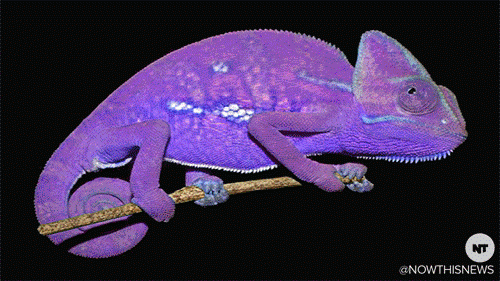Why Voice-Over Artists Deserve More Recognition


Have you seen Inside Out 2’s trailer? Unless you’re living under a rock, it’s impossible to miss it. After all, it’s the sequel of one of the most thought-provoking and poignant animated movies of all time.
And this time, the five central emotions – Joy, Anger, Disgust, Fear, and Sadness – are joined by others, with Anxiety already becoming a fan favorite.
Twitter had a ball with the introduction; one of the netizens claimed that “There’s, like, 5 of these in my brain.” Another said, “Shout out to the animator for knowing exactly what anxiety should look like: a weird little guy.”

Source: GIPHY
Among the excitement, however, there were some concerns.

Source: GIPHY
The actors who voiced Disgust and Fear – Mindy Kaling and Bill Hader – were replaced by two different actors. Upon further investigation, we found out that both were offered only $100,000 each, while Amy Poehler, who voices Joy, was offered $5 million plus additional fees and bonuses.
So, we connected the dots and deduced that Kaling and Hader were making 1% of what Poehler was making. And that’s why they refused to return.
Now, some might argue that Joy was the lead of the pack in Inside Out. So, it’s understandable why Poehler was earning a heftier income for the sequel. However, Kaling and Hader are comedians and well-established actors in their own right; it doesn’t make sense to treat them like this.
Unfortunately, this is just the tip of the iceberg. Deep down, there’s a bigger problem plaguing Hollywood and the animation industry as a whole: voice-over (VO) artists are underpaid.
How much a VO artist earns depends on multiple factors, like their experience and project length. But to give you a ballpark figure, here’s what the compensation looks like:
• Beginners
Entry-level artists usually start with small projects, earning around $100 to $300 per project.
• Mid-Level
Once VO artists start to gain experience and exposure, they can – and should – negotiate higher rates, preferably $300 to $1000+ per project.
• Experts
A VO artist possessing a wealth of experience should charge $1000 – several thousand dollars per project. At this stage, they’ve practically achieved the celebrity status, which is why the high fee is justifiable.
Important: Some production houses hire actors to voice characters and pay a hefty amount simply because they’ll attract more crowd. Reese Witherspoon, who voiced Susan Murphy in Monsters vs. Aliens, reportedly earned $10 million for the project.
The media and entertainment landscape are vast, with many talents brushed under the rug. VO artists, unfortunately, belong to the list. In spite of the fact that you hear their voices probably more than your own, their contributions are often overlooked.
VO artists breathe life into characters, commercials, films, TV shows, documentaries, and just about every message conveyed using the medium of videos.
They communicate emotions, form relationships, and evoke emotional responses without even appearing in front of the viewers. That’s a testament to their artistic prowess.

Source: GIPHY
It wouldn’t be wrong to say that VO artists are chameleons in human form. From swapping accents to changing voice modulation, they know exactly when to seamlessly transition between diverse characters.
For instance, did you know that Tommy from Rugrats was voiced by a female VO artist E. G. Daily? Similarly, some of the primary characters in Bob’s Burgers are women, yet they’re voiced by men.
VO artists are insanely talented. They’re brimming with skills that help them become the masters of the field. Some of them include, but are not limited to:
Voice pitch, tone, and range are crucial for VO artists, and they’re able to control it with precision. They also practice expanding their vocal range to play different characters.
Word pronunciation and dictation matter a lot for VO artists. And they’re excellent at it, ensuring the messages they deliver are easily understood by the listeners and viewers.
Recording a voice-over is not just about randomly blurting our words. In many ways, it’s akin to acting, where you understand the character and then convey your emotions without overplaying.
Geographical restrictions do not bind art; it transcends boundaries, especially videos. Take the US’s example. Despite boasting high-quality local animation production studios, there’s a huge fan following of foreign content, particularly anime based on Japanese manga and Studio Ghibli.
But those films and anime are in Japanese. While many prefer watching them in the original language, some have trouble following the subtitles and the scenes at the same time.
Do you know who comes to the rescue here? Yes, you guessed it right – VO artists.
Typically, they go through a lengthy process to translate the lines from Japanese to English before recording them. All so those watching (in this case, you) can easily understand and enjoy the video in their native language.
Like every other industry, the media and entertainment industry are constantly evolving. The emergence of new technologies and trends drives VO artists to hone their skills.
Fortunately, VO artists are more than up for the task.
Take AI’s example. In the past few years, it has penetrated almost every industry worldwide. Today, it’s even possible to get an AI tool to record a human-like voice-over.
But do you know how VO artists responded to this?
By focusing on creativity, developing unique skills, and giving their voices more depth.
This way, even the most advanced AI tool will not be able to replicate the warmth found in a human’s voice. Not in a hundred years.
VO artists do far more than just narrate sentences. Every word that comes out of their mouth has a purpose: to effectively convey the message being presented.
So, the next time you’re watching a commercial or an animated film and feel a rush of emotions flowing through you, appreciate the VO artists who managed to make it happen.